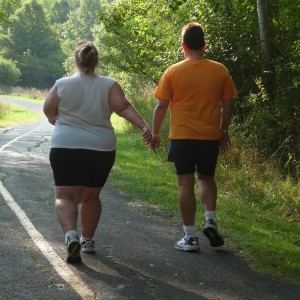 Researchers at Drexel University in Philadelphia recently published in the journal Obesity Reviews that “natural experiments” can help determine the real impact that policy and “built” environmental changes have in the overall health of the population, especially regarding obesity. The study is entitled “Impact of policy and built environment changes on obesity-related outcomes: a systematic review of naturally occurring experiments.”
Researchers at Drexel University in Philadelphia recently published in the journal Obesity Reviews that “natural experiments” can help determine the real impact that policy and “built” environmental changes have in the overall health of the population, especially regarding obesity. The study is entitled “Impact of policy and built environment changes on obesity-related outcomes: a systematic review of naturally occurring experiments.”
Policies and alterations to the built environment like building walking paths and forbidding sodas in school’s vending machines represent an effort to prevent obesity and can be assessed as ‘natural’ or ‘quasi’-experiments. However, “rigorous science is needed to evaluate these natural or quasi-experiments,” noted the corresponding author of the study Dr. Amy Auchincloss in a news release.
In this study, a systematic review was conducted to determine, based on these naturally occurring experiments, the efficacy and actual impact of policy and built environment changes on obesity, namely in diet, body mass index (BMI) and physical activity outcomes. The research team searched in the literature for studies published between 2005 and 2013 that focused on addressing natural experiments and their results in the context of policies and built environment changes. In addition, researchers also analyzed the assessment methods and the limitations in each study. In total, 1,175 abstracts and 115 papers were reviewed, but only 37 studies were selected for further analysis. Of these, 18 studies addressed the impact on diet/nutrition, 17 assessed physical activity and 3 focused on BMI.
The researchers found that there are certain types of interventions that have a higher success rate in improving obesity-related outcomes than others, and they detected areas that require more research. Concerning changes in diet and food policies, changes that lead to a better nutritional food quality were the ones with the strongest impact on obesity, for instance by banning or restricting the availability of sugary beverages and unhealthy foods with high amounts of sugar and/or fat.
Regarding changes in physical activity, researchers found that the ones with a stronger impact were the ones that involved improvements in infrastructures for active transportation (e.g. bike/transit infrastructures) and longer follow-up periods. However, more research is required to evaluate the physical effects of built environment changes like infrastructures, trails and parks.
“Research suggests that people will use new amenities like bike shares, and limit purchases of unhealthy foods in specific contexts like schools,” said the study’s lead author Stephanie Mayne. “But it is less clear whether these changes translate into overall improvements in diet and physical activity.”
Since only three studies directly analyzed the impact on BMI or weight, researchers were unable to reach a conclusion on whether policy and environmental modifications are successful in maintaining a healthy weight or reducing excess weight.
The research team concluded that natural experiments are an important tool to evaluate the impact of public policies and investments on the population’s health. Researchers suggest that more natural experiments should be conducted regarding obesity-related policies.


